The Save & share menu in NUsearch helps you to export and share details of the resources you find.
You can choose from the following options:
- Email or print - send details of a resource(s) to yourself or others, or print out details
- Share - generate a stable link to a resource, which you can share with others
- Citation - create a reference for a resource in a choice of citation styles to include in your essay or research
- QR code - generate a QR code that you can scan with your phone to go straight to the record for that resource
- Export to referencing software - allows you to export to a variety of tools e.g. EndNote Online, Mendeley, RIS etc.
Save & share menu
How to access the Save & share menu
You will see the Save & share menu when you open an individual resource record.

You can also access it from your results list or saved records (in My Favourites), allowing you to export individual or multiple resource records.
For individual resources, click the three dots icon (Show export options) in the menu to the right of a title:

For multiple resources, select the records to be exported using the tick boxes to the left of the titles. Click the three dots icon (Show export options) above your results or saved records list.
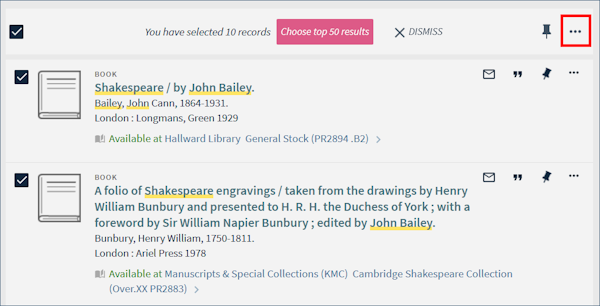
Help using the different export options
Email or print resource details

Click Email if you want to share a resource with someone or send the details to yourself for later.
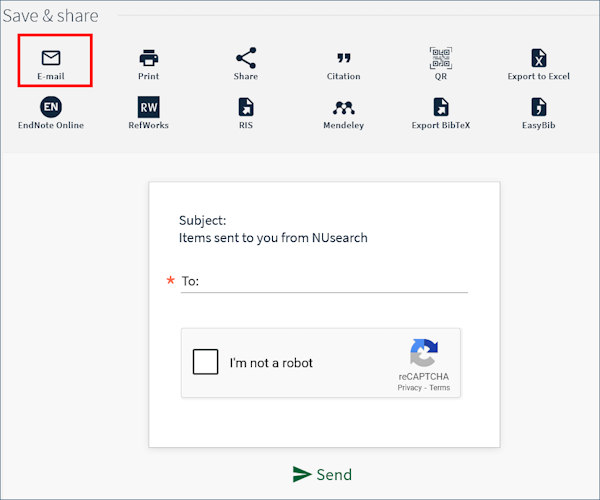
The email you receive will include:
- details of the resource
- a link to the NUsearch resource record
If you prefer to print out these details select the Print option instead.
How to share links to resources

If you would like to share a link to a NUsearch resource, the best way to use the Share option to generate a permalink.
A permalink is a stable shortened link that will always take you to the resource record.
Click the Share option and a link will be generated on screen, with the option to copy to clipboard. You can then paste it wherever you like.
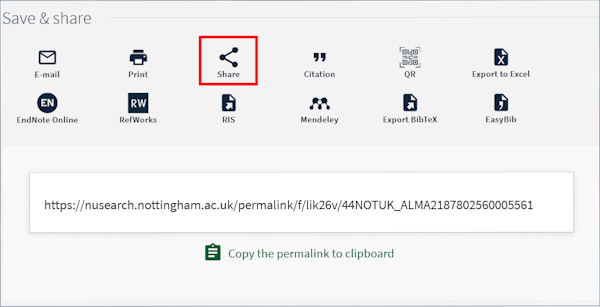
Use a QR code to bookmark a resource

If you have been searching NUsearch and find a book you need to go to the library for, you can quickly transfer the details to your phone by clicking the QR option.
This will generate a QR code on screen, which you can scan with your phone to open the resource record.
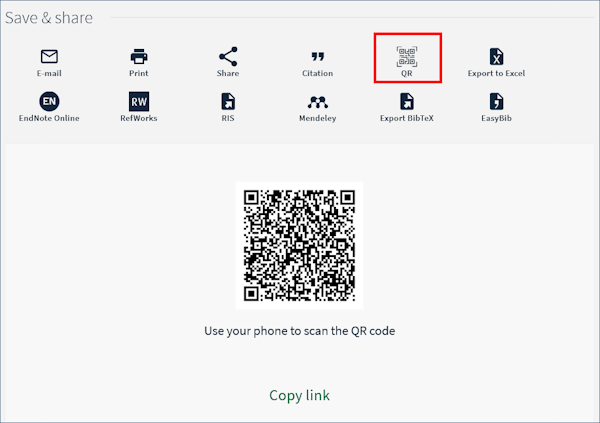
Create a reference in your citation style

If you have used a resource in your essay or research, you can generate a reference for it in a citation style of your choice.
Select the Citation option. Choose from the list of citation styles available.
You will see a preview of the reference, with the option to copy to clipboard. You can then paste it in to your work.
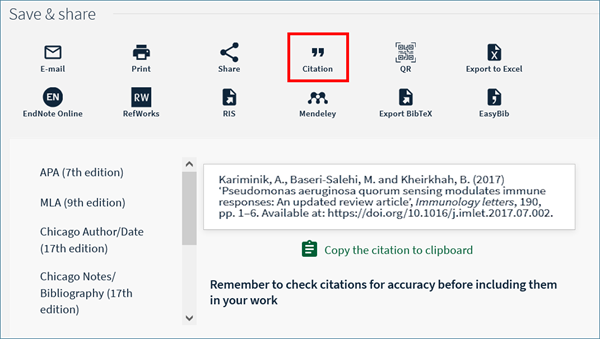
It is always best to check citations for accuracy before using them in your work.
Export your references

You can export references of resources that you find in a variety of different ways.
This means no matter how you choose to organise your references, you should be able to quickly and easily transfer the details for individual or multiple resources.
You can simply export details to a spreadsheet, or if you are using reference management software into your chosen program.
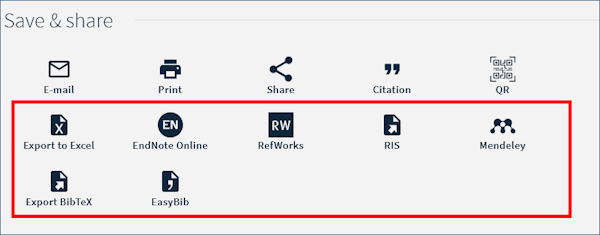
Options available include:
- Export to Excel - you have a choice of downloading to csv (comma separated) or xlsx (Excel) file formats. This allows you to open the details in a spreadsheet of your choice.
- EndNote Online, RefWorks, Mendeley or EasyBib - import directly into your online accounts for the relevant reference management software. You will need to log into your account first.
- RIS - export to RIS file format, which is a standardised format for reference management programs. You can then use this to import the references into EndNote Desktop or other software.
- Export BibTex - export to BibTex file format, which is another format for references normally used in conjunction with the LaTex document editor.
The University subscribes to EndNote Desktop and EndNote Online (web version), which are both available for you to use.
For more help and support:
Studying Effectively: Reference management software Using EndNote Online Using EndNote Desktop